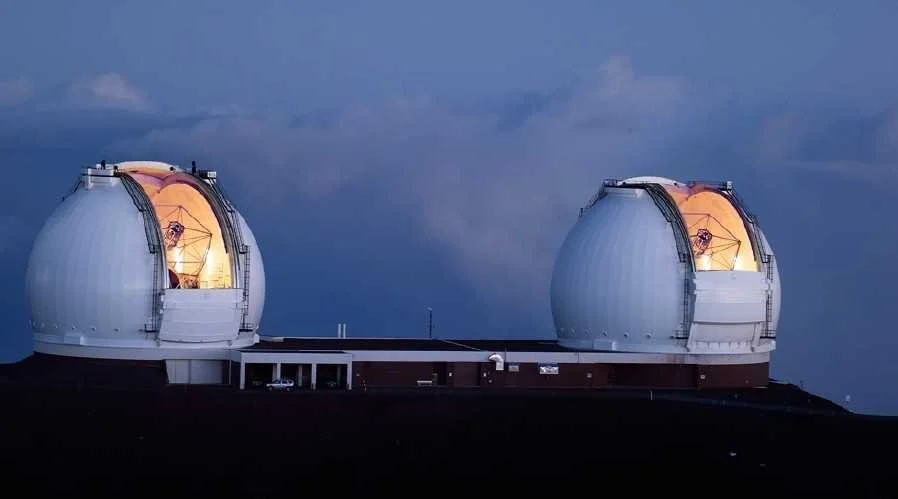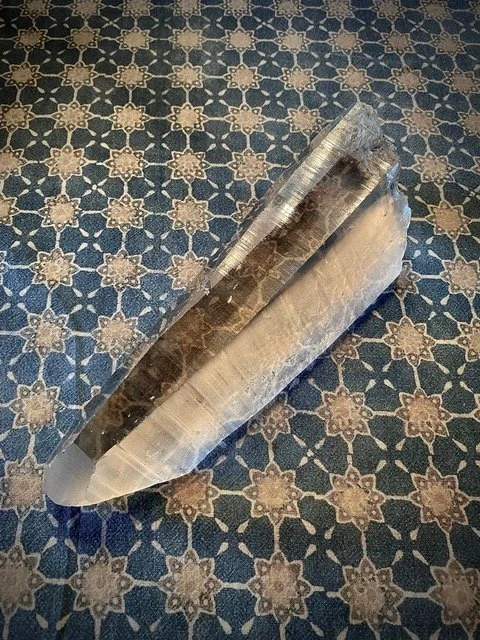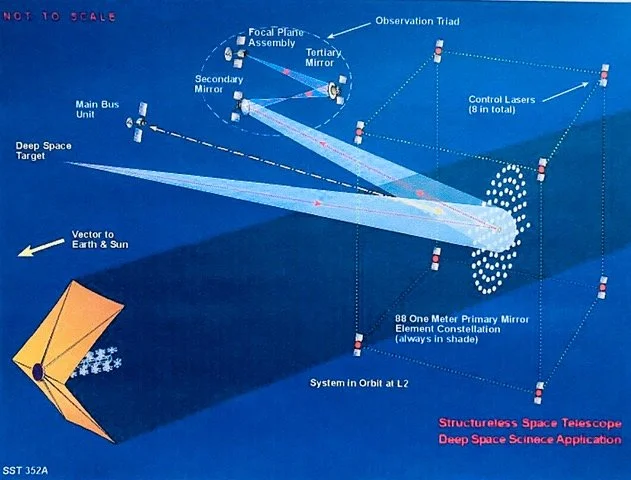Free-floating Space Telescope
Our approach, on the face of it, was just too hard to believe. One had to have faith in the development and success of several new technical systems that should work, but have never been built. Nudging objects with sub-micron level accuracy using a surrounding array of lasers makes sense but had never been done. The technology to perform basic assembly in space using flying robots will surely work one day, but does not exist now. The data handling requirement of wrangling a herd space objects … just the number of computations per second …is probably doable now, but back in the day no such massive computers existed.
Most seriously, we had no good answer to the very difficult question of how the whole thing would be repositioned to study different parts of the heavens. On the ground, as each scientist completes his observations, the big dome is simply rotated and the telescope inside is swung into position for the next scientist’s work. Our free-floating telescope would have to be essentially rebuilt pointing at something else. The Hubble and the Webb are rigid structures. That backbone allows them to be reoriented with ease using small attitude control thrusters to quickly swing them around to investigate something new … say a newly discovered killer asteroid.
There have indeed been spacecraft programs that capitalized on the conceptual and rigorous analysis of non-connected optics that we did. One involved two identical spacecraft with 2 meter telescopes flying hundreds of meters apart in orbit. They were precisely coordinated using lasers to focus both telescopes on the exactly the same target.
A bi-optic telescope has much higher resolution (can see finer detail) than a single one with the same overall mirror area. Big telescopes have more light gathering ability and can see dimmer targets, but a pair will give a sharper picture. Therefore, many new land based telescopes are in fact pairs of telescopes working in unison. Below is the Keck telescope on the top of Mauna-Kea in Hawaii. Each dome has a 10 meter primary mirror made up of 36 hexagonal segments. They are kept precisely in a perfect optical figure using laser measurement system like the one we proposed. However, they get their "nudges” from tiny mechanical actuators behind them that hold them in place on the strong-back.
Of course, they have to look upward through Earth’s murky atmosphere. That’s where space-based telescopes get their principal advantage.









